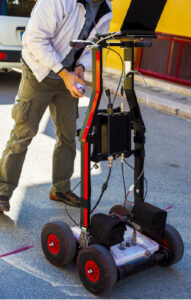Ground-penetrating radar or GPR as it’s frequently known within the industry is essential when it comes to land surveying. In fact, there are specific best practices that come into play when it comes to using GPRs and land surveys, generally speaking. The reality is, there are all sorts of things surveyors must consider when using GPRs. Here are some of the best approaches to using GPR successfully.
Knowing Your Target Characteristics Before Using GPR
Before you even begin, it is imperative that you take the time to properly and adequately determine all the specific characteristics you are looking for when surveying the land in question. There is nothing worse than not being properly prepared to survey land. Ultimately, ground penetrating radars will travel very long distances when used effectively and efficiently. As a result, radar velocity for other materials can come into play. That means radar velocity must always be calculated before beginning a survey of any piece of land.
Opting For The Best Survey Design
Choosing the perfect survey design is key whenever you approach a land survey and are seeking success. Once investigators have taken all the key characteristics into question, it is imperative to design the best survey possible to be as effective and efficient as you can. When very high confidence is a must, the key with any survey design is to make sure that it is always based on a bidirectional grid. As a result, this will mean that investigators need to have proper spacing between the lines so that they are equal to the smallest dimension of the targets themselves.
Choosing The Proper Antenna For Your GPR
Selecting the right antenna frequency is a must when using GPR. Investigators need to take the time to adequately consider both the size as well as the depth of the target in question. The reality is, being aware of the important factors associated with a land survey will make the process easier for you, and the use of GPR is something any investigator will be able to handle successfully. Finding the proper antenna can make a world of difference with how easy it is to conduct a land survey successfully.
Concrete Visions Will Get The Job Done Right
Concrete Visions has been working with clients for over 25 years. Our G&M Services installers are certified with the industry’s major firestop product manufacturers. As part of our firestop service, we can assess abnormal field conditions and, with the manufacturer’s technical support assistance, provide engineering judgments in a timely fashion to comply with contract specifications. Our Field Mechanics undergo ongoing training, including mandatory monthly safety meetings, weekly Toolbox Talks where safety and equipment information is shred, and trainings on safe work standards and safety best practices.

